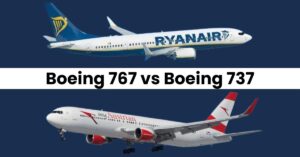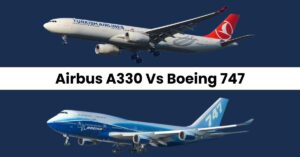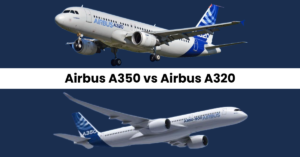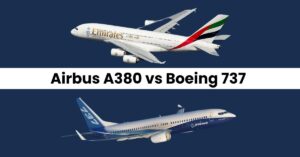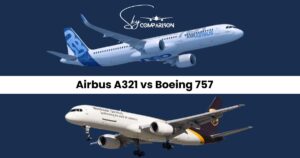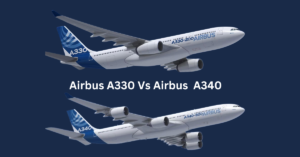Airbus A321 vs Boeing 787 | Range & Passenger Capacity
In the dynamic world of commercial aviation, the Airbus A321 vs Boeing 787 Dreamliner serve as two pivotal aircraft, each with unique attributes tailored to specific market needs. While the Airbus A321, particularly in its latest XLR variant, reinvents the capabilities of narrow-body aircraft for extended range operations, the Boeing 787 Dreamliner takes wide-body, long-haul flights to new levels of efficiency and passenger comfort. This comparison dives into how these aircraft stand apart and why their differences matter to airlines and passengers alike.
Airbus A321 vs Boeing 787
The Airbus A321 vs Boeing 787 is like comparing a sprinter to a marathon runner. The Airbus A321 is a narrow-body aircraft, known for its efficiency on short to medium-haul flights, comfortably carrying around 180 to 220 passengers. It’s like a sprinter, fast and efficient over shorter distances. On the other hand, the Boeing 787, or Dreamliner, is a wide-body aircraft designed for long-haul flights, carrying between 242 and 336 passengers over vast distances without stopping. It’s more like a marathon runner, built for endurance and to cover long distances efficiently.Check out our comparison of the Airbus A321 vs Boeing 737 to see how they differ.
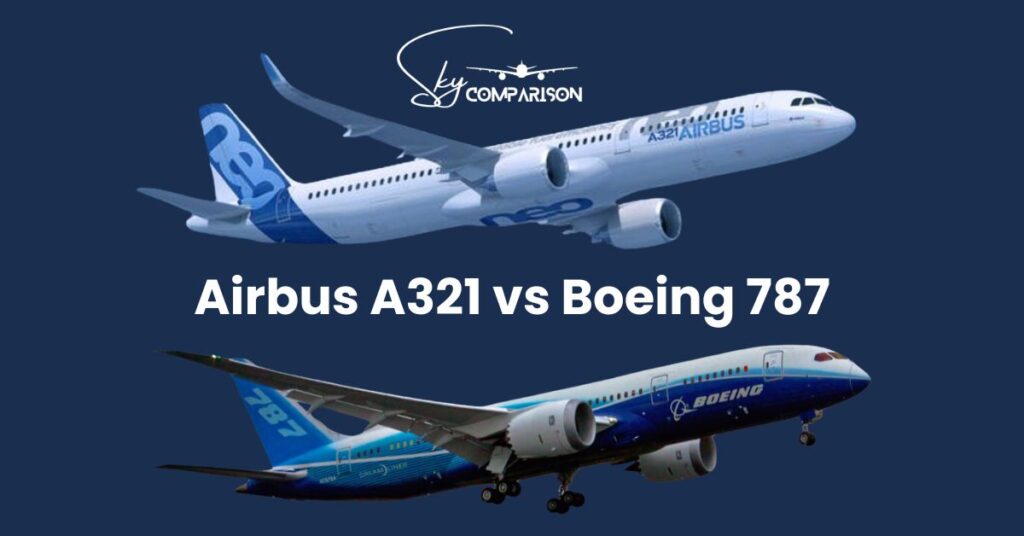
While the A321 shines in making regional travel more accessible and cost-effective, the 787 opens up the globe, making long-distance travel more comfortable and environmentally friendly. Each aircraft excels in its own right, serving different market needs with advancements in aviation technology.
Here’s a comparison table that puts the key specifications of the Airbus A321 vs Boeing 787-8 side by side for easy comparison:
| Specification | Airbus A321-200 | Boeing 787-8 |
|---|---|---|
| Length | 44.50 m (146 ft) | 56.69 m (186 ft) |
| Wingspan | 34.10 m (111 ft 10 in) | 60.17 m (197 ft 5 in) |
| Wing area | 122.60 m² (1,320 ft²) | 347.00 m² (3,735 ft²) |
| Height | 11.70 m (38 ft 5 in) | 17.00 m (55 ft 9 in) |
| Engines | 2 | 2 |
| Thrust per Engine | 147 kN (33,000 lbf) | 285 kN (64,000 lbf) |
| Total Thrust | 294 kN (66,000 lbf) | 570 kN (128,000 lbf) |
| MTOW | 93,500 kgs (206,000 lbs) | 227,930 kgs (502,000 lbs) |
| Range | 5,000 km (2,700 nm) | 14,530 km (7,846 nm) |
| Cruise Speed | M0.78 | M0.85 |
| Capacity | 185 passengers | 242 passengers |
This table highlights the differences between the two aircraft, showcasing how the Boeing 787-8 is larger, has a greater thrust, can carry more weight, has a longer range, and can accommodate more passengers compared to the Airbus A321-200. The 787-8’s design and capabilities make it well-suited for long-haul international flights, while the A321-200 is often used for short to medium-haul routes.
Airbus A321
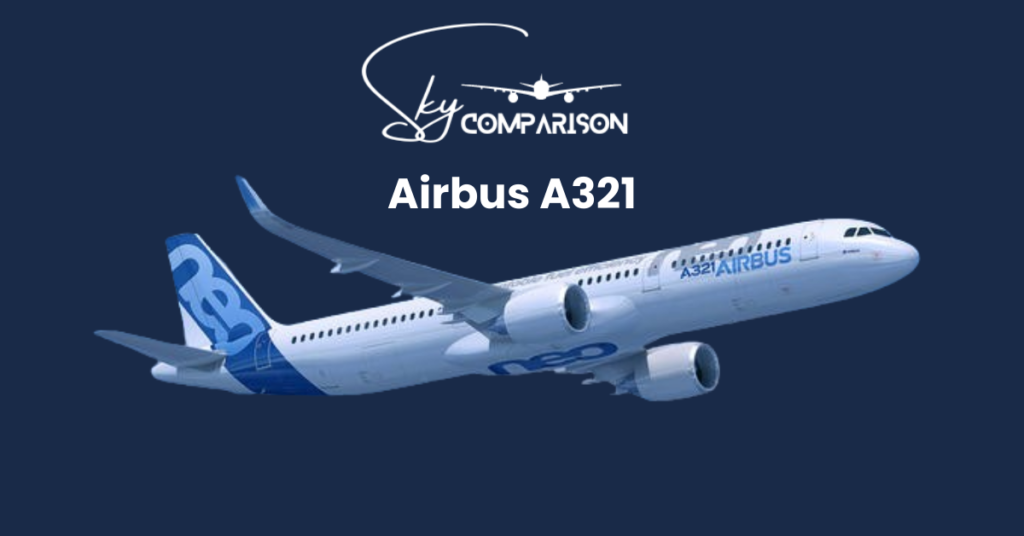
The Airbus A321 is a popular airplane known for its efficiency and comfort on short to medium-haul flights. It’s part of the Airbus A320 family, which is a group of single-aisle airplanes. The A321 stands out because it’s the longest version, meaning it can carry more passengers – up to 244 in some layouts. Airlines like it because it uses less fuel compared to other planes of similar size, making it cheaper to operate. Passengers enjoy flying on the A321 because it has a comfortable cabin with enough space for everyone’s luggage. It’s a common sight at airports around the world, flying routes that connect cities within continents.
Boeing 787
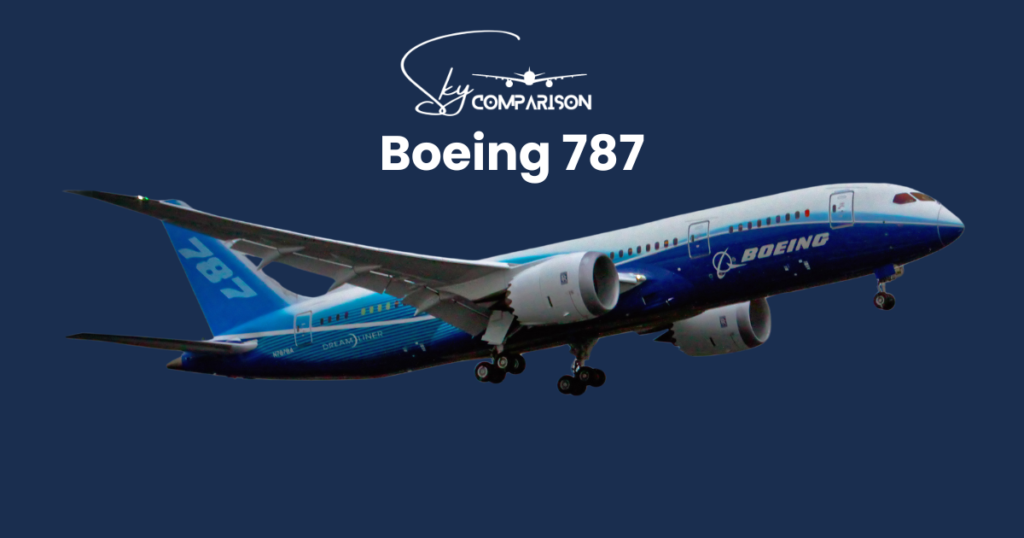
The Boeing 787, also known as the Dreamliner, is a revolutionary airplane that has changed the way we fly. It’s a wide-body aircraft, which means it’s quite large and can carry a lot of passengers—between 242 and 336 people, depending on the model. What makes the 787 special is its use of advanced materials and technology, making it lighter and more fuel-efficient than other airplanes of its size.
This efficiency allows it to fly long distances without stopping, opening up new non-stop routes across the globe and making travel more convenient. Passengers love the 787 because its design includes larger windows, more comfortable air pressure and humidity levels, and smoother flight experiences. It’s truly a modern marvel in the sky, offering a blend of comfort, efficiency, and environmental friendliness.
Capacity and Range
The seating capacity and range of these aircraft reflect their distinct market segments. The Airbus A321XLR can carry approximately 180 to 220 passengers in a standard two-class configuration, with a maximum range of up to 4,700 nautical miles. This capability makes it an ideal choice for airlines looking to serve long-haul routes with lower passenger demand, enabling more direct flights and reducing the need for connections.
The Boeing 787, available in three variants (-8, -9, and -10), can accommodate between 248 and 336 passengers, depending on the model and configuration, with ranges from 6,430 to 7,635 nautical miles. This allows airlines to operate some of the longest non-stop flights in the world, connecting major city pairs with significant passenger volumes.
Operating Efficiency
Both aircraft offer impressive fuel efficiency and reduced operating costs, but their specific advantages cater to different operational needs. The A321XLR’s fuel efficiency shines on medium-haul routes, providing cost savings and flexibility for airlines to explore new markets without the risk associated with larger aircraft. Its narrow-body design also allows for quicker turnaround times, further enhancing operational efficiency.
The Boeing 787’s efficiency is most evident on long-haul routes, where its advanced aerodynamics, materials, and engines deliver significant fuel savings per seat. This efficiency, combined with its larger cargo capacity, makes the Dreamliner an attractive option for airlines aiming to maximize revenue on long-distance flights.
Passenger Experience: Comfort Across Distances
While both aircraft incorporate modern amenities and comfort features, the passenger experience differs notably due to their design. The A321XLR, with its single aisle, offers a more intimate cabin atmosphere, with innovative features such as mood lighting and ergonomic seating. Its range capability ensures that even on longer flights, passengers enjoy a high level of comfort.
The Boeing 787 elevates the travel experience with its spacious twin-aisle cabin, higher humidity levels, and larger electronically dimmable windows. The Dreamliner’s design reduces jet lag and provides a noticeably smoother ride, making it a preferred choice for passengers on long-haul journeys.
Airbus A321 vs Boeing 787 Engines
When we compare the engines of the Airbus A321 and the Boeing 787, we’re looking at two sets of powerful machines designed for different purposes. The Airbus A321 is typically equipped with engines like the CFM International LEAP-1A or the Pratt & Whitney PW1100G. These engines are built to be efficient and reliable over short to medium distances, providing the perfect balance of fuel efficiency and performance for the A321’s needs.
On the other hand, the Boeing 787 uses larger, more powerful engines such as the General Electric GEnx or the Rolls-Royce Trent 1000. These engines are designed to carry the 787 on long-haul flights, offering exceptional fuel efficiency and reduced emissions over thousands of miles. While the A321’s engines are tailored for shorter routes with high efficiency, the 787’s engines are geared towards extended range and endurance, showcasing the varied capabilities of each aircraft in their respective segments.
Airbus A321 vs Boeing 787 Seating Capacity
Comparing the seating capacity of the Boeing 787 vs Airbus A321 variants shows how these aircraft cater to different market needs. The Boeing 787, with its twin-aisle design, offers a spacious cabin that can comfortably seat between 248 to 336 passengers in a typical 2-class configuration, making it ideal for long-haul flights where comfort and capacity are paramount. The more common setup in economy is nine seats across, allowing for a comfortable, wide cabin space.
| Aircraft | Typical 2-Class Seating | Maximum Seating | Configuration Examples |
|---|---|---|---|
| Boeing 787-8 | 248 | – | First (2-2), Business/Premium Economy (2-3-2), Economy (3-3-3) |
| Boeing 787-9 | 296 | – | First (2-2), Business/Premium Economy (2-3-2), Economy (3-3-3) |
| Boeing 787-10 | 336 | – | First (2-2), Business/Premium Economy (2-3-2), Economy (3-3-3) |
| Airbus A321 | 200 | 239 | |
| Airbus A321ceo | 170 – 210 | 220 | Economy (3-3), Business (2-2) |
| Airbus A321neo/XLR | 180 – 220 | 244 | Economy (3-3), Business (2-2) |
In contrast, the Airbus A321, a single-aisle aircraft, has a typical 2-class seating capacity ranging from 170 to 220 passengers, with a maximum capacity reaching up to 244 for the neo/XLR variants. The A321’s economy class usually has six seats across the aisle, providing efficiency and density for short to medium-haul flights. While the 787 excels in offering more space and comfort for longer journeys, the A321 shines in operational efficiency and flexibility, serving airlines that require high-density configurations for shorter routes. This diversity in seating capacities and configurations highlights the distinct roles each aircraft plays in the aviation industry, from the A321’s short to medium-haul efficiency to the 787’s long-haul comfort.
Conclusion
Comparing the Airbus A321 vs Boeing 787 highlights their distinct roles in aviation. The A321 excels in short to medium-haul flights with its efficiency and cost-effectiveness, while the 787 Dreamliner dominates long-haul travel with its advanced technology and superior comfort. Both aircraft are at the forefront of aviation technology, designed for different market needs. The A321 offers flexibility for regional routes, and the 787 provides extensive range and enhanced passenger experience for global travel. Together, they offer airlines versatile options to meet diverse operational goals, playing key roles in the evolving aviation landscape.
FaQs
Are both aircraft compatible with current environmental regulations?
Yes, both the Airbus A321 and Boeing 787 are designed to meet current environmental regulations, incorporating fuel-efficient engines and materials to reduce carbon emissions and noise levels.
What makes the Boeing 787 suitable for long-haul flights?
The Boeing 787 is designed with long-haul travel in mind, featuring advanced aerodynamics, materials, and engines that offer greater efficiency and comfort over longer distances.
Which aircraft is bigger, the Airbus A321 or the Boeing 787?
The Boeing 787 is bigger than the Airbus A321, both in terms of length and wingspan, allowing for a higher passenger capacity and greater range.
What are the main differences between the Airbus A321 and Boeing 787?
The main differences lie in their size, range, and intended use. The Airbus A321 is optimized for short to medium-haul flights, while the Boeing 787 Dreamliner is designed for long-haul, intercontinental routes. The 787 features a larger passenger capacity, greater wingspan, and significantly longer range compared to the A321.
Is there a difference in passenger comfort between the two aircraft?
Yes, the Boeing 787 offers enhanced passenger comfort features suited for long-haul flights, such as higher humidity, larger windows, and advanced air filtration systems. The Airbus A321 provides a high level of comfort for a narrow-body aircraft, but it is designed with shorter flights in mind.
How do airlines choose between the Airbus A321 and Boeing 787?
Airlines choose based on route length, passenger demand, and operational efficiency. The Airbus A321 is preferred for its flexibility and efficiency on shorter routes with high frequency, while the Boeing 787 is chosen for its ability to economically serve long-distance routes with its larger capacity and range.

